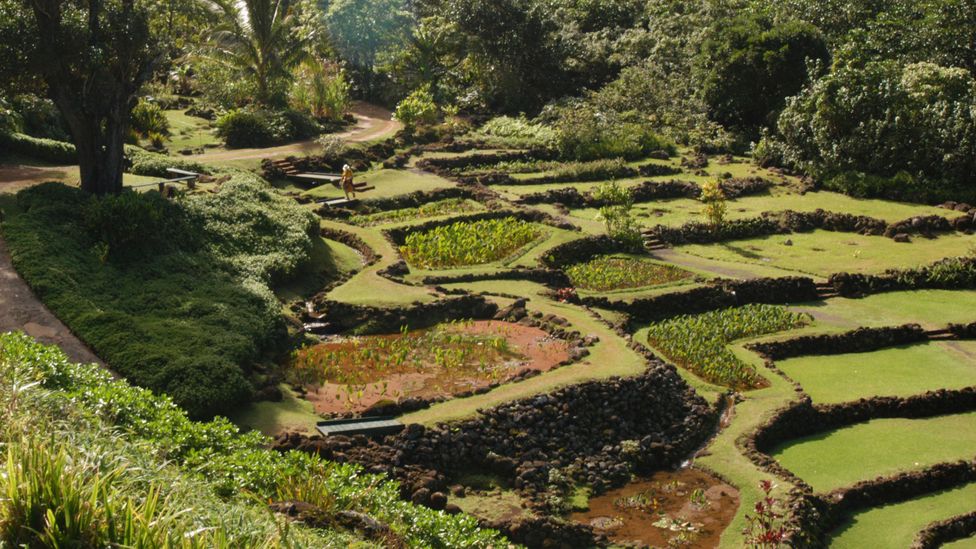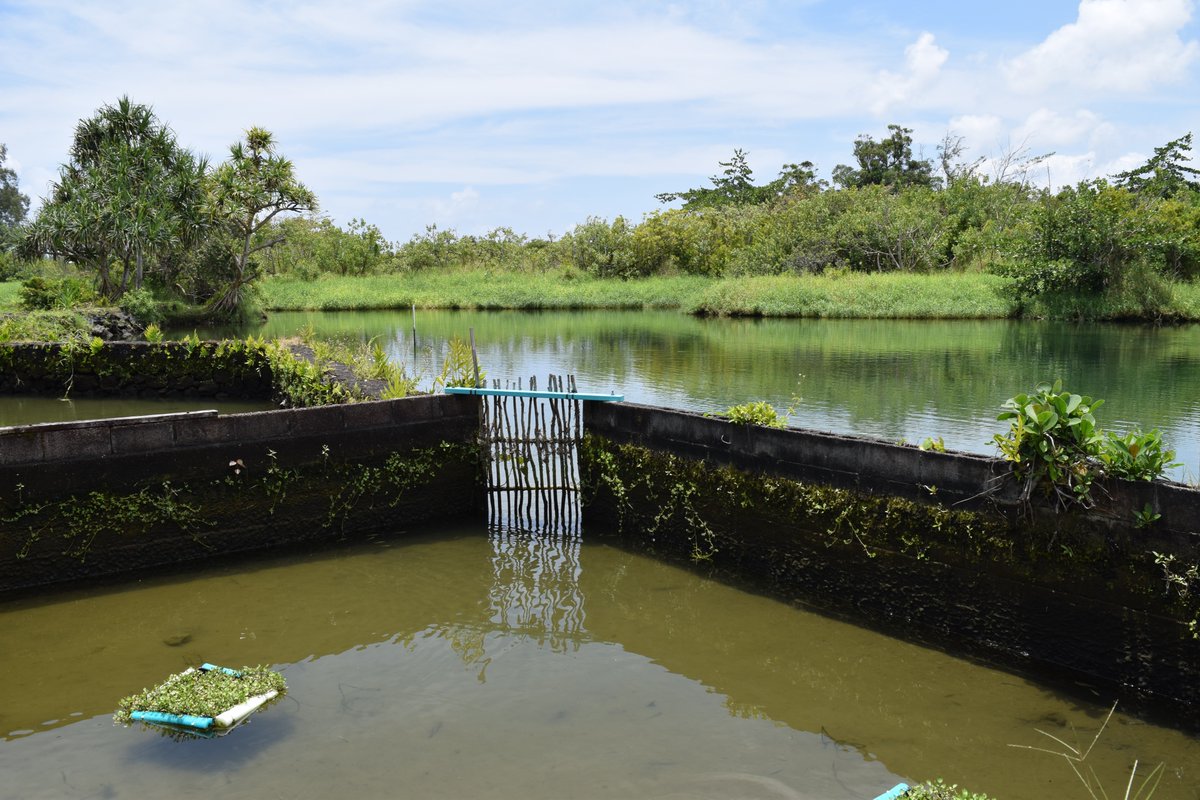Food is important for Community survivability.
From this tweet by Sam Knowlton: https://twitter.com/samdknowlton/status/1615742176151113730
—
In the zone below the agroforestry, Hawaiians grew their most important staple and culturally significant crop: taro This zone was terraced and irrigated with water from the mountain streams. Water was diverted into the terraced pools, gently spilling from one to the next

Excess water would return to the stream, where it continued towards the sea. The freshwater would eventually meet the sea and spill into rock-walled fish ponds in the tidal pools. Fish were captured with sluice gates and fattened up in the nutrient-rich brackish water

A recent study concluded that the ahupua’a system could produce 1 million metric tons of food from just 6 percent of Hawaii’s land. That’s enough to feed all of the estimated 1.2 million pre-contact Native Hawaiians, or 86% of the current population of Hawaii, 1.4 million.
In contrast, Hawaii’s current farmland covers 3x more land than before 1777, and the total food produced through modern methods is only 151,700 metric tons That’s only 15% of what was produced more than 200 years ago by Native Hawaiians on 3x less land without external inputs
The ahuapua’a system was first conceived around the 15th century. It was successfully used for more than 1,000 years to produce a cornucopia of foods, maximize and sustain precious water resources, preserve a rich ecology, and support a vibrant culture.
Today, we go straight for the shiny technological fix; we’ve lost track of the whole and focus too much on the individual pieces, resulting in fragile agriculture systems The ahuapa’a is an example of the kind of agricultural ingenuity that is possible in each unique bio-region
The second to last tweet should read: The ahuapua’a system is believed to have been conceived in the 15 century. However, some evidence shows that it was successfully used for over 1,000 years. Thanks to all who pointed out my math deficiency. I also mix up my colors.
ChatGPT research
Hawaii’s Journey to Self-Sufficiency in Food: A Historical Perspective
Introduction
The Hawaiian Islands, known for their captivating beauty and rich culture, also hold a remarkable history of self-sufficiency in food production. This blog post delves into Hawaii’s past, exploring how the islands once thrived on an agricultural system that was both sustainable and robust.
The Era of Self-Sufficiency

Caption: Traditional Hawaiian agricultural practices.
In the times before Western contact, the Hawaiian Islands were a model of self-sufficiency. Utilizing just six percent of the land, the native Hawaiians were able to produce over a million metric tons of food annually. This impressive feat was achieved through a sophisticated system of land management and agriculture, known as the “ahupua’a” system. This system divided the land into pie-shaped sections extending from the mountains to the sea, encompassing diverse ecological zones that allowed for a variety of crops and farming methods.
Challenges and Adaptation
Despite the efficiency of their system, Hawaiians faced challenges such as periodic famines, usually triggered by natural disruptions or social upheavals. However, the resilience of their agricultural practices and their deep understanding of the land enabled them to overcome these obstacles and maintain a stable food supply.
Transition and Change

Caption: The impact of Western contact on Hawaiian agriculture.
The arrival of Westerners marked a significant turning point in Hawaii’s agricultural history. The integration into global trade networks shifted the focus from self-sufficiency to exportation. This change gradually eroded traditional farming practices and led to a decline in local food production.
Legacy and Lessons for the Future

Caption: Modern agriculture in Hawaii and the revival of traditional practices.
Today, Hawaii’s history of self-sufficiency serves as a vital lesson. It highlights the potential and importance of sustainable agriculture and food security. Efforts are now being made to revive some of these traditional practices, adapting them to modern needs and challenges, and aiming to reduce the dependency on food imports.
Conclusion
Hawaii’s journey from a self-sufficient past to its current state offers valuable insights into the importance of sustainable agricultural practices. As the world grapples with issues of food security and sustainability, Hawaii’s history serves as both a cautionary tale and a source of inspiration.
To complete this blog post, let’s add some illustrative images that correspond to the various stages of Hawaii’s agricultural history.



Here are the illustrations to accompany the blog post on Hawaii’s historical self-sufficiency in food:
- Traditional Hawaiian Agricultural Practices: This image illustrates the ancient Hawaiians farming on terraced fields with a variety of crops. The lush greenery, with a backdrop of mountains and sea under a bright blue sky, highlights the efficient and sustainable agricultural methods used in pre-contact Hawaii.
- Impact of Western Contact on Hawaiian Agriculture: This image depicts the moment of Western contact with Hawaii, showing Western ships arriving at the Hawaiian shore. Native Hawaiians are seen greeting them, showcasing the blend of traditional Hawaiian and Western elements in a coastal landscape.
- Modern Hawaiian Agriculture: This image represents the mix of traditional and contemporary farming practices in modern Hawaii. It features advanced machinery and greenhouses alongside traditional fields, set under a sunny sky with the Hawaiian landscape in the background.
These images help visualize the evolution of Hawaiian agriculture from a self-sufficient past to its current state, reflecting the changes and adaptations over time.